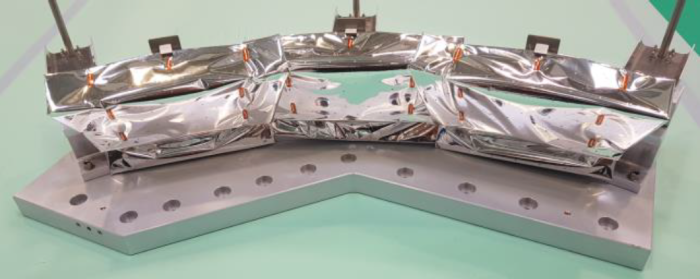Development of generic MLI flap for spacecraft interface ring - Phase I
Programme
TDE
Programme Reference
T721-S16MT
Prime Contractor
RUAG SPACE GMBH
Start Date
End Date
Status
Closed
Country
Austria

Objectives
To develop a generic mechanism for MLI flaps to insulate spacecraft launch vehicle adapter ring once the satellite is separated from the launcher.
Description
This activity aims at developing a generic solution, adaptable to the various (but limited in number) types of interface rings, to insulate the exposed surface once the spacecraft has been separated from the launcher. It could consist in a series of MLI flaps with a passive mechanism keeping it away from the Launch vehicle Adapter in quot;open positionquot;. The flap is automatically deployed in quot;closed positionquot; to protect the interface ring from the external environment (cold Space, Sun flux, planet flux). Such a concept has already been used and flight proven on ATV. The activity may reuse such heritage and generalize it the different existing types of launch interface.
Spacecraft launch vehicle interface ring are often an unprotected part of the spacecraft, which cannot be insulated with MLI because of the interface with the Launch Vehicle Adapter (LVA). Due to the interface with the launcher, the possible solutions for coating are limited and constrained by several requirements (mechanical, electrical...). In addition, MLI insulation cannot interfere with the flight clamband attachment. Depending on the attitude of the spacecraft, the interface ring, once separated from the launcher vehicle becomes exposed to external environment, which may induce consequent heat leaks when in the shadow or heat input when it is Sun illuminated. Because of its strong mechanical and thermal coupling with the main structure of the spacecraft, the interface ring is a critical element for thermal control sizing, knowing that it has often a limited qualification temperature range (typically, -40degC, +70degC). This induces heavy constraints such as restriction of authorized attitude (e.g. no long sun illumination), heating power to compensate the radiated flux from its exposed surface, implementation of sunshield, etc.
List of foreseen tasks during phase I:
-
- User need and requirements (identification of need, Spacecraft Interface Requirements, MLI flap preliminary specification)
- Preliminary Design Phase (trade off, selection of technologies, materials, preliminary design)
- Detailed Design Phase (Detailed design, Test plan, design of test bench, possible demonstration mock-up, Model)
Phase II will be funded through GSTP and will encompasses the following tasks :
- Manufacturing and Assembly of STM
- Deployment, thermal and mechanical tests
Application Domain
Generic Technologies
Technology Domain
21 - Thermal
Competence Domain
2-Structures, Mechanisms, Materials, Thermal
Initial TRL
TRL 2
Target TRL
TRL 4
Achieved TRL
TRL 6
Public Document
Executive Summary
